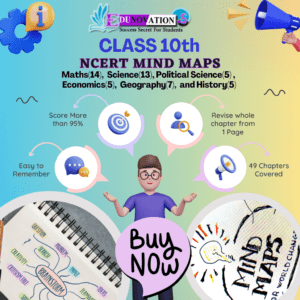Promotion of Indian Languages in Higher Education : Explore India’s NEP-driven shift toward regional language learning with AI translation tools to enhance accessibility and equity in higher education.
India is at the brink of a transformative shift in how it approaches higher education. With the promotion of Indian languages in higher education becoming a key priority under the National Education Policy (NEP 2020), the government is taking bold steps to make education more inclusive, rooted, and relevant. The recently held “Bharatiya Bhasha Utsav” and the “2nd Akhil Bhartiya Shiksha Samagam” marked a pivotal moment in this journey.
From empowering students through AI-driven translation tools to enabling technical education in regional languages, this cultural and educational movement is more than policy—it’s a mission for academic equity.
Understanding the Mission Behind Language Promotion
India’s higher education system has long been dominated by English. While that opened doors to global opportunities, it also marginalized countless students from rural or vernacular backgrounds. Recognizing this gap, the government’s focus has shifted to empowering students in their mother tongue instruction for Indian university students.
By embracing the country’s linguistic diversity, this move aligns education with identity and local context—an approach long overdue in a country with over 22 scheduled languages and hundreds of dialects.
Key Announcements and Policy Shifts
🏛️ Bharatiya Bhasha Utsav: A Symbol of Cultural Revival
The recent Bharatiya Bhasha Utsav, hosted in collaboration with IIT Madras and other leading academic institutions, marked a turning point in the promotion of Indian languages in higher education. The event brought together language experts, academicians, and policymakers to celebrate India’s linguistic diversity and reaffirm the nation’s commitment to cultural preservation through education.
Panel discussions focused on the practical roadmap for integrating region-language technical course offerings in India, especially within engineering and science disciplines. As a cultural revival initiative, this Utsav played a dual role—honoring traditional languages while charting a futuristic, inclusive academic vision.
🧠 Role of Anuvadini and UDAAN: Breaking Barriers with AI
To ensure that language doesn’t hinder access to knowledge, the government is now actively leveraging AI translation tools for rural student education. Platforms like Anuvadini and UDAAN have emerged as vital bridges, translating complex academic content into regional languages in real-time.
These AI tools are central to the promotion of Indian languages in higher education, especially for students from rural areas or economically disadvantaged backgrounds. By democratizing content delivery, they ensure that knowledge is no longer gated by English fluency.
📚 Case Studies: Progress in Action
Significant milestones are already being observed on the ground:
- IIT Bombay and IIT Madras have started delivering engineering courses in Hindi, Tamil, and Marathi.
- The All India Council for Technical Education (AICTE) now encourages the creation of Indian language textbooks and lecture modules.
- Over 130 universities have either begun implementing or are in the process of adopting multilingual instruction strategies.
These developments reflect not only institutional commitment but also the scalable potential of the multilingual higher education policy India 2025. Each initiative feeds directly into the core objective of expanding the promotion of Indian languages in higher education nationwide.
🎯 Benefits of Language-Centered Learning
The impact of this language-focused transformation extends beyond access—it enhances educational quality and psychological well-being.
- ✔ Improved Comprehension and Retention
Students learning in their native language understand concepts more deeply and recall them more effectively, especially in complex fields like mathematics and science. - ✔ Greater Participation in STEM Fields
Previously, many capable students shied away from STEM subjects due to language barriers. With Indian languages now part of the curriculum, technical education is more inclusive. - ✔ Boost in Student Confidence
Mastering subjects in one’s mother tongue fosters a stronger academic identity. This increased self-confidence often translates to higher classroom participation and performance.
Ultimately, the promotion of Indian languages in higher education is not just a pedagogical reform—it’s a national empowerment strategy that acknowledges diversity as a strength, not a hurdle.
Toppers Use Mind Maps to score more than 95%
NCERT Class 11th Commerce Mind Maps
Add to cartOriginal price was: ₹999.00.₹199.00Current price is: ₹199.00.NCERT Class 12th Chemistry Mind Maps
Add to cartOriginal price was: ₹199.00.₹75.00Current price is: ₹75.00.NCERT Class 12th Commerce Mind Maps
Add to cartOriginal price was: ₹999.00.₹199.00Current price is: ₹199.00.NCERT Class 12th Science Mind Maps
Add to cartOriginal price was: ₹999.00.₹199.00Current price is: ₹199.00.NCERT Mind Maps For Class 10th
Add to cartOriginal price was: ₹999.00.₹199.00Current price is: ₹199.00.
Purchase Today
Challenges and Solutions
| Challenge | Proposed Solution |
|---|---|
| Lack of standardised textbooks | AI translation tools like Anuvadini |
| Faculty training for new languages | Regional teacher training workshops |
| Resistance from English-medium institutions | Pilot programs to demonstrate success |
Expert Insight
Dr. Anil Sahasrabudhe, Chairperson of NETF and ex-AICTE Chief, remarked,
“Multilingual education is not about rejecting English—it is about including everyone.”
He emphasized that “promotion of Indian languages in higher education” is not a return to the past, but a leap into a more inclusive future.
Role of Technology and Ed-Tech Startups
Platforms like Anuvadini (developed by AICTE) and Bhashini are using NLP and ML algorithms to generate real-time translation of technical lectures. This is a game changer for AI translation tools for rural student education.
Additionally, new-age ed-tech platforms like Mart India Infotech are helping schools across India build their digital infrastructure to support multi-language digital learning.
Empowering Educators and Institutions
Colleges are encouraged to:
- Digitize notes and lectures for easy AI translation
- Build repositories of bilingual or trilingual resources
- Collaborate with regional boards to ensure curriculum alignment
Teachers are being trained in multilingual pedagogy, ensuring they are equipped to deliver content effectively.
Practical Resources for Students & Educators
To support this movement, students can explore:
- 📚 NCERT Courses
- 📌 Current Affairs
- 📝 Notes
- 🎯 MCQ’s
- 🎥 Educational Videos
- 📘 Syllabus
- 🧾 Free NCERT PDFs
- 🧠 NCERT Mind Maps
These resources support mother tongue instruction for Indian university students by simplifying access to multilingual study aids.
India’s Global Position and Vision 2047
By 2047, India aims to become a global knowledge hub. A cornerstone of that vision is multilingual higher education policy India 2025, which will equip youth with culturally relevant, accessible, and competitive education.
Conclusion
The promotion of Indian languages in higher education isn’t just about language—it’s about empowerment. It’s about ensuring every student, regardless of background, has a fair shot at success.
With smart policies, AI-driven tools, and a national push for equity, India is setting a precedent for the world to follow.
🙋♂️ Frequently Asked Questions (FAQs)
1. What is the focus of the Bharatiya Bhasha Utsav 2025?
To promote Indian languages in higher education and empower regional language learning.
2. How will AI translation tools for rural student education help?
They translate English content into native languages, increasing accessibility for rural learners.
3. What are Anuvadini and UDAAN?
They are AI-based translation platforms helping students understand technical subjects in local languages.
4. Which IITs offer region-language technical course offerings in India?
IIT Madras and IIT Bombay offer technical courses in Tamil, Marathi, and Hindi.
5. What is the role of mother tongue instruction for Indian university students?
It improves comprehension, boosts confidence, and enhances learning outcomes.
6. What does multilingual higher education policy India 2025 aim for?
It aims to implement regional languages in at least 50% of higher education institutions.
7. Is this policy limited to humanities or also for STEM?
STEM fields like engineering are now being taught in Indian languages at many institutes.
8. Can students still learn in English under NEP 2020?
Yes, the initiative is inclusive and allows for English learning alongside regional languages.
9. How can schools adopt this multilingual approach?
They can use AI tools, digitize learning material, and train teachers in bilingual instruction.
10. Where can students find free NCERT resources in their language?
Visit Edunovations Downloads for multilingual PDFs and mind maps.














